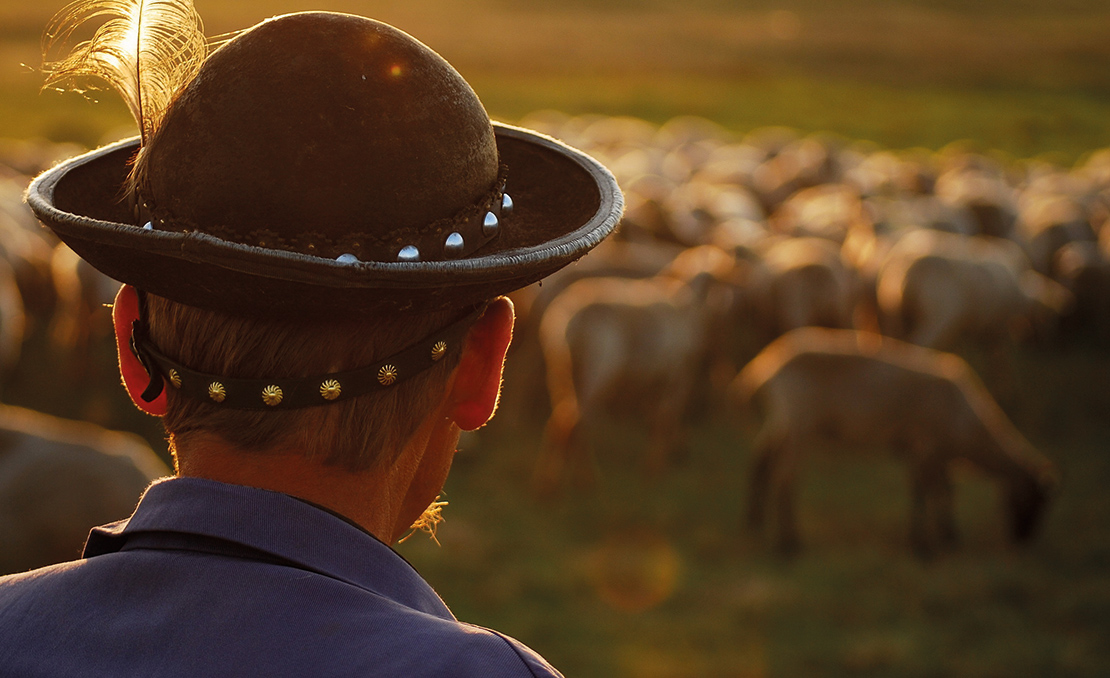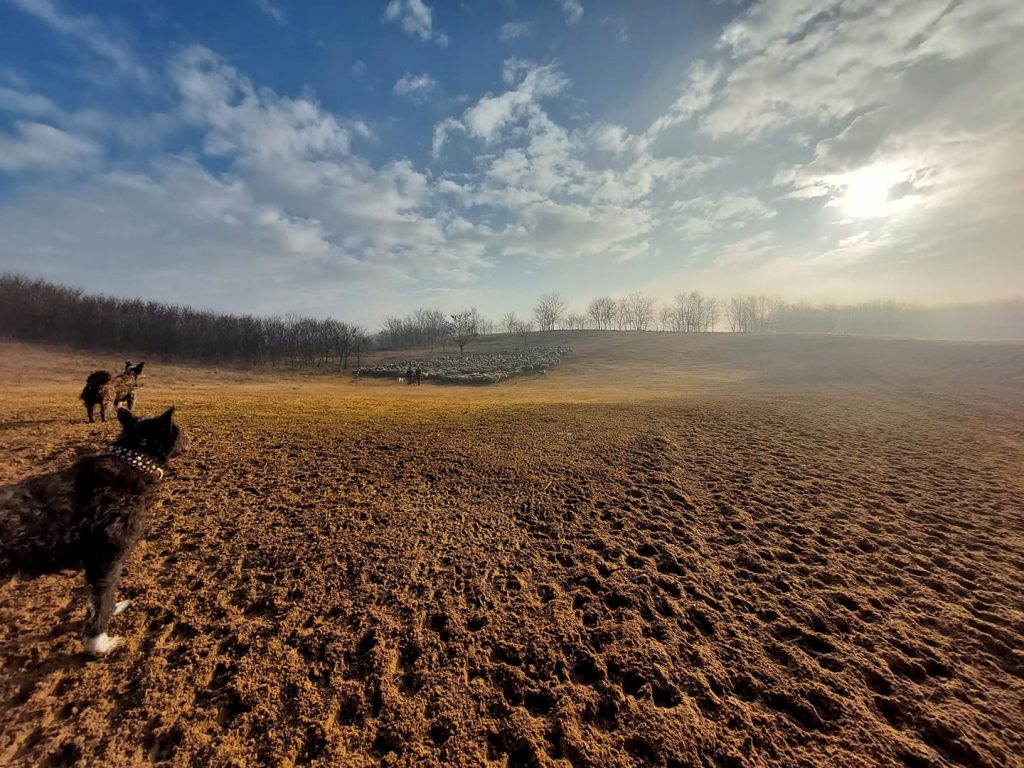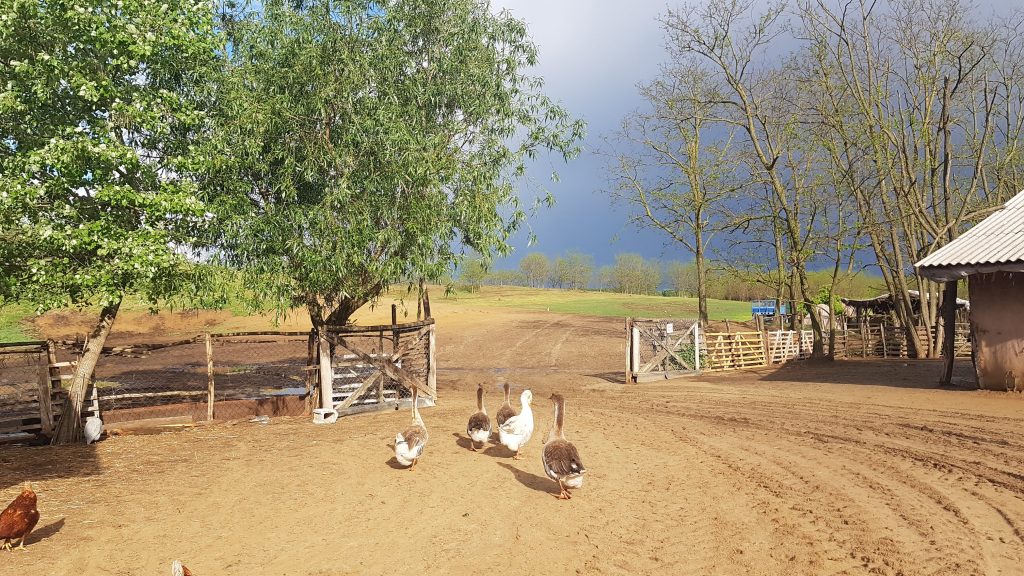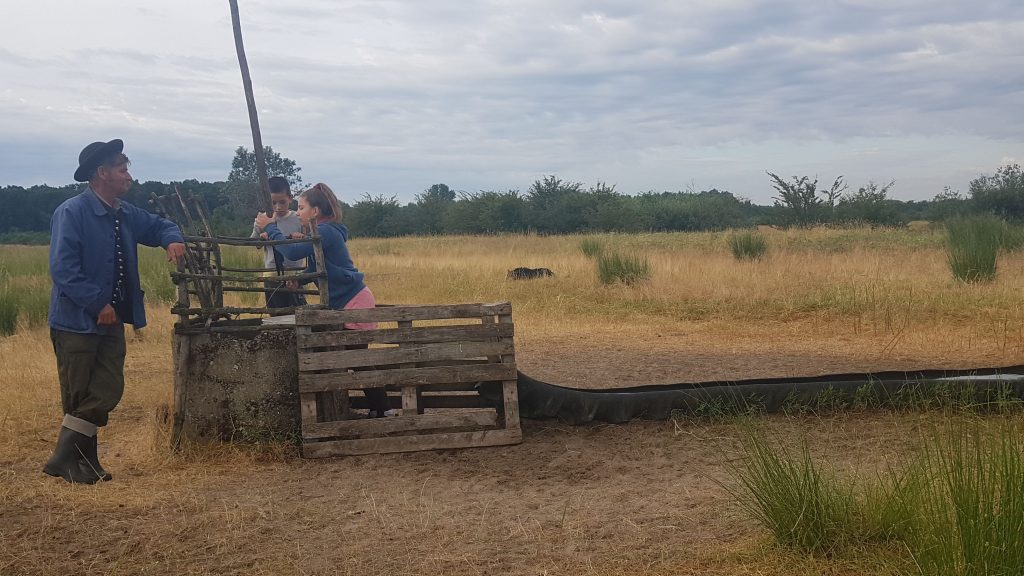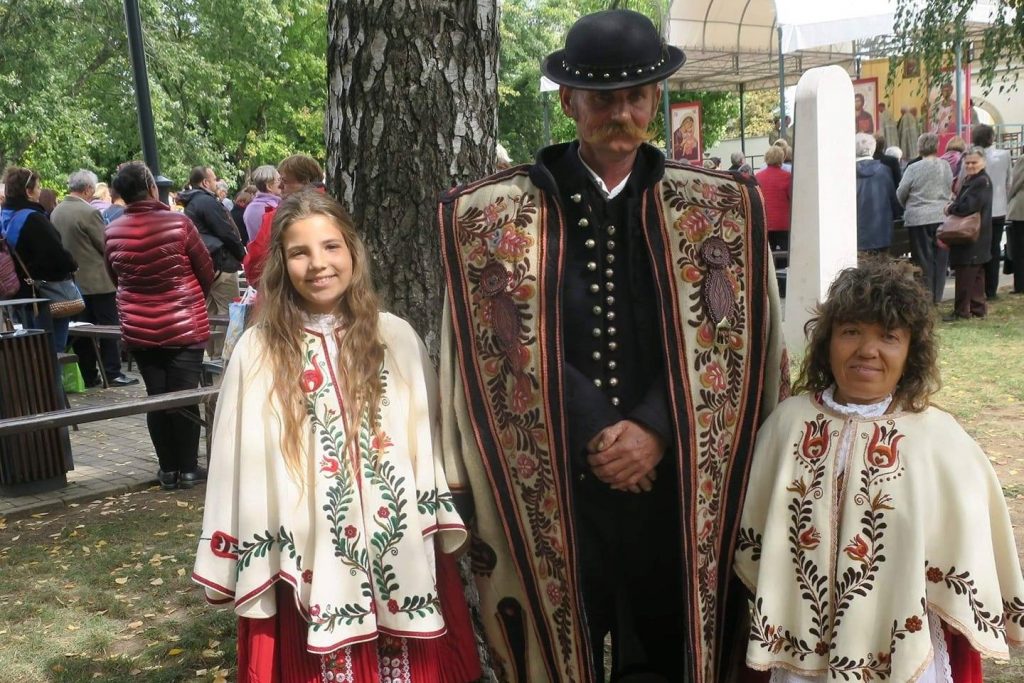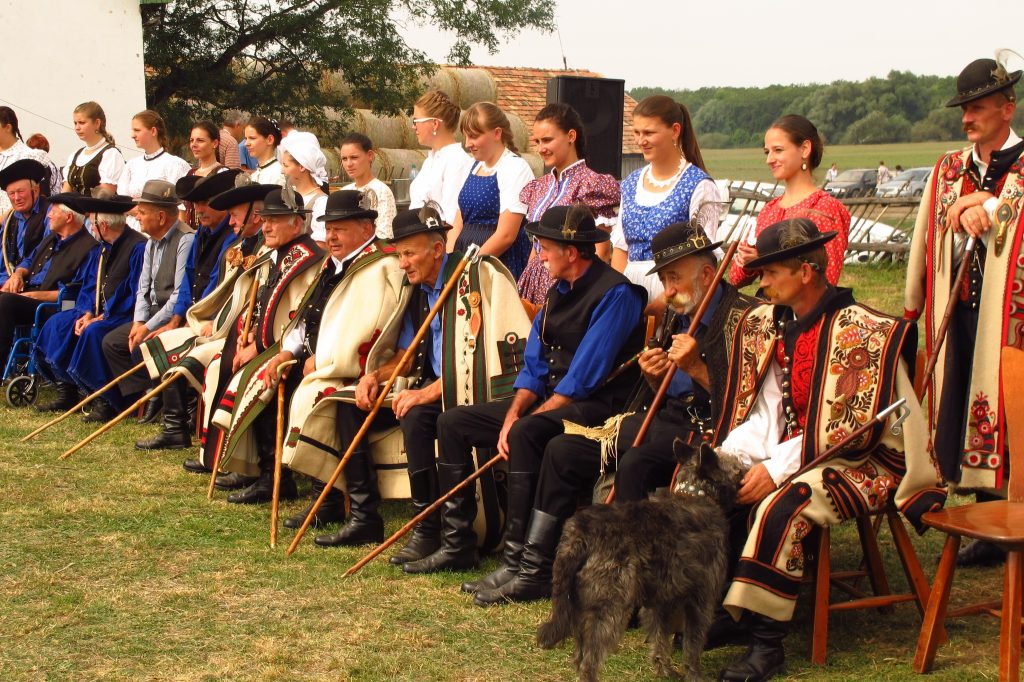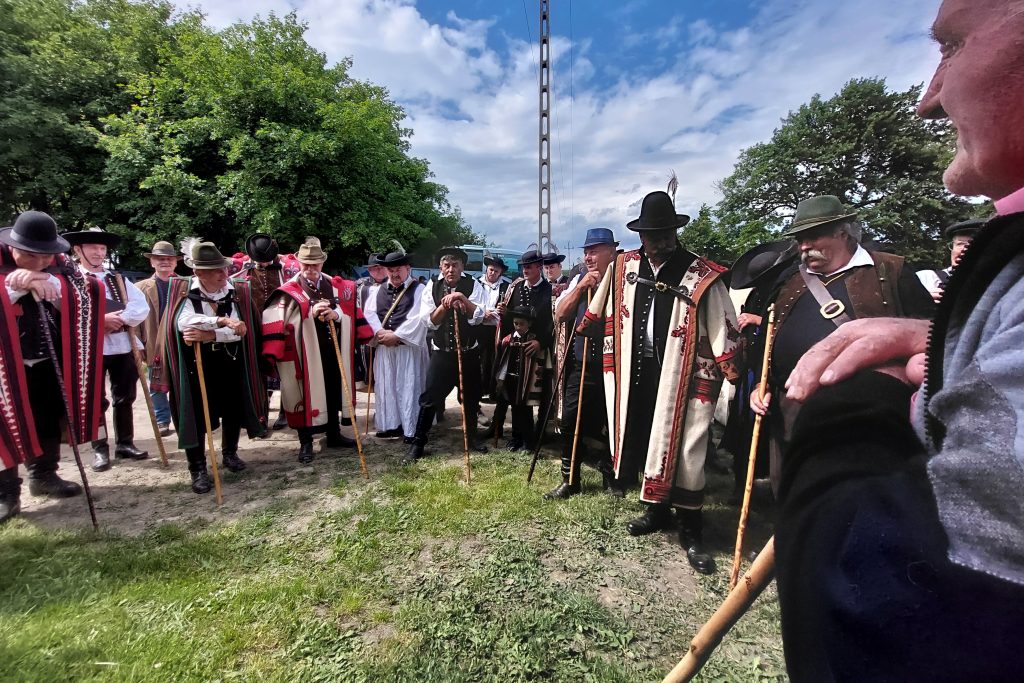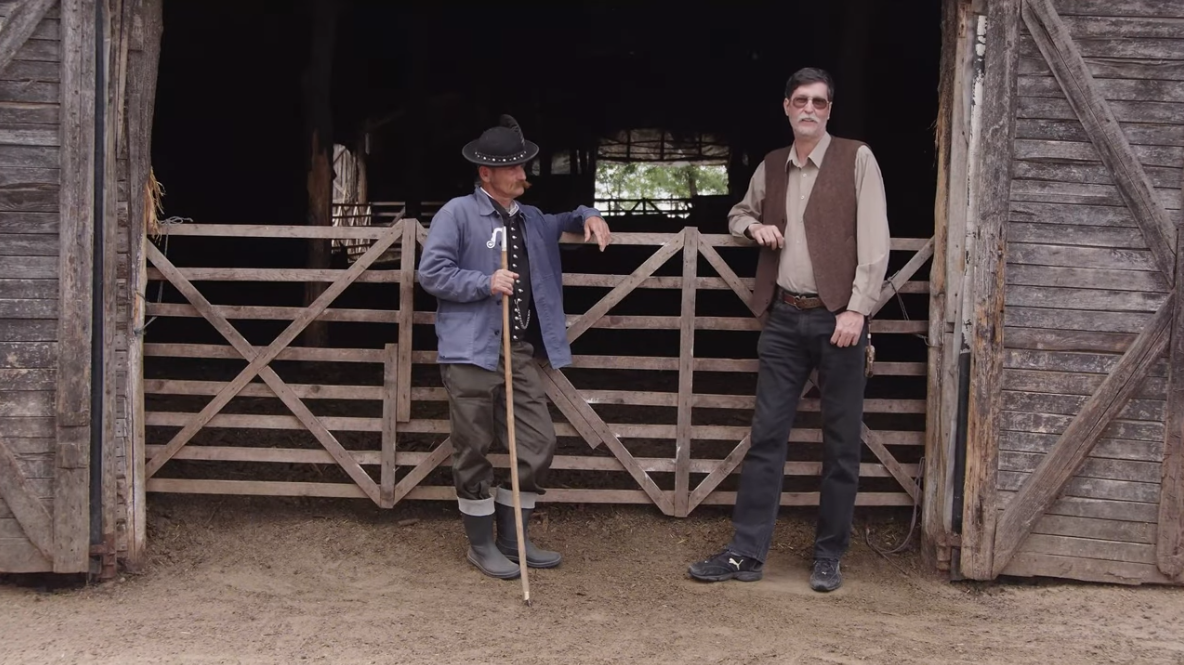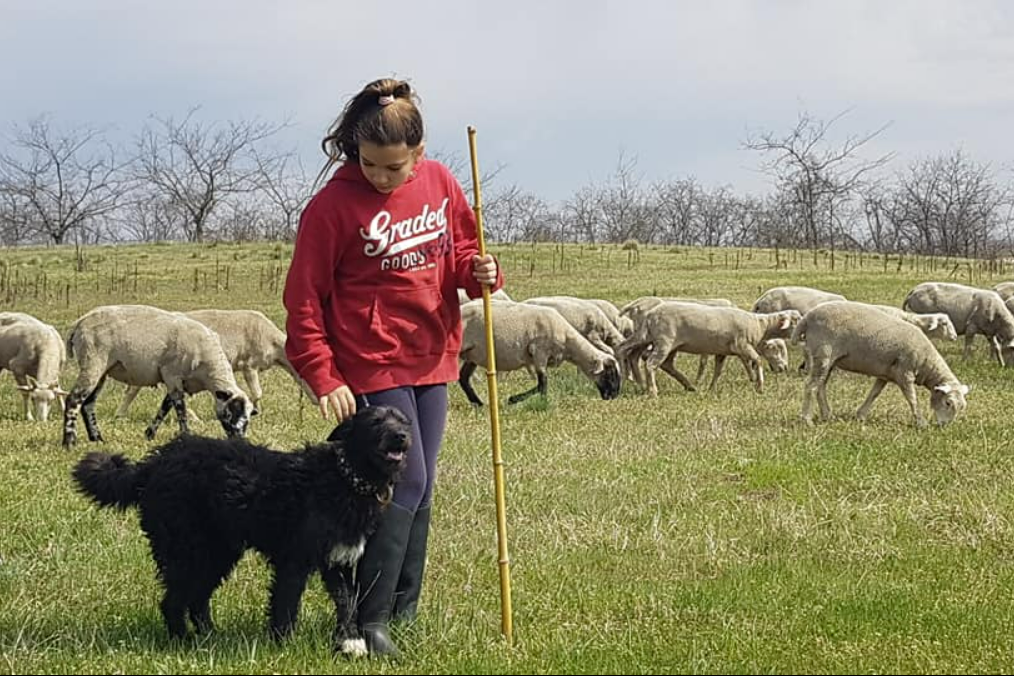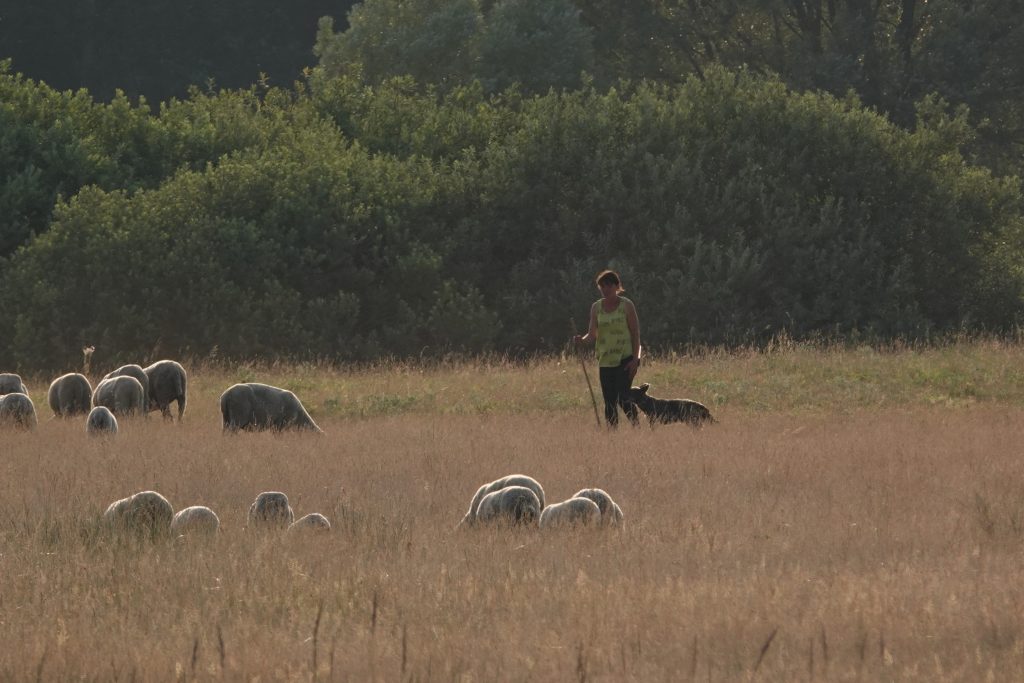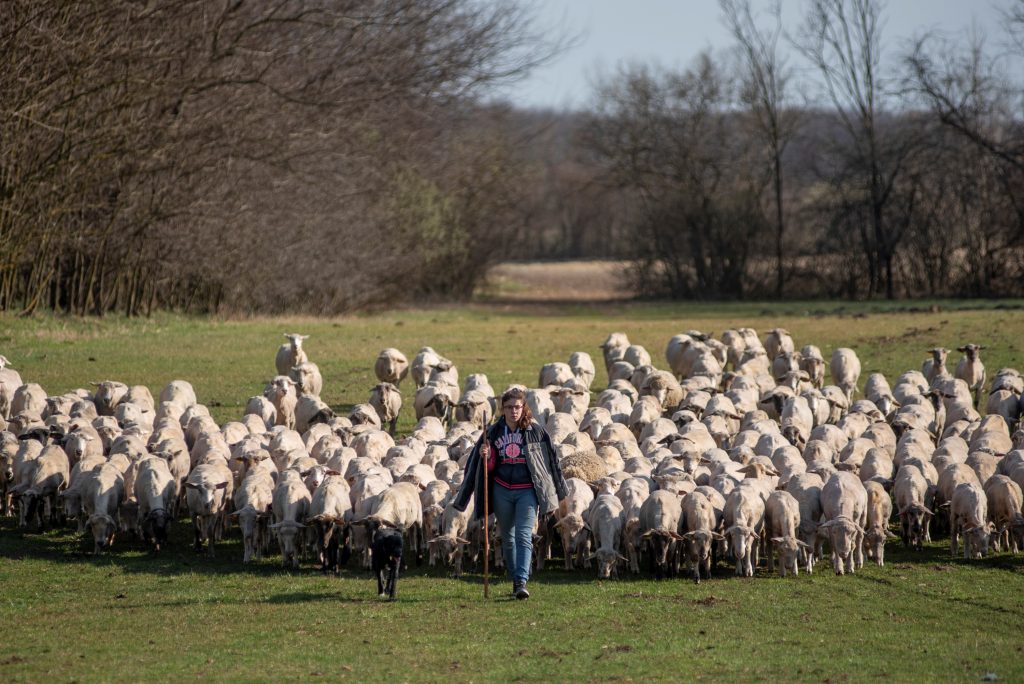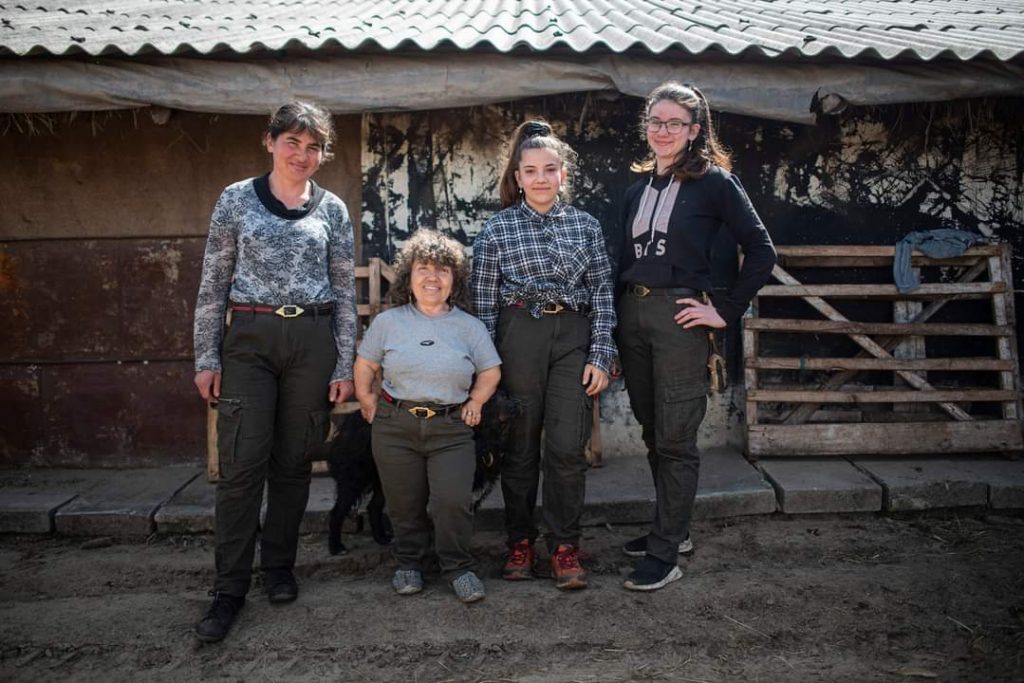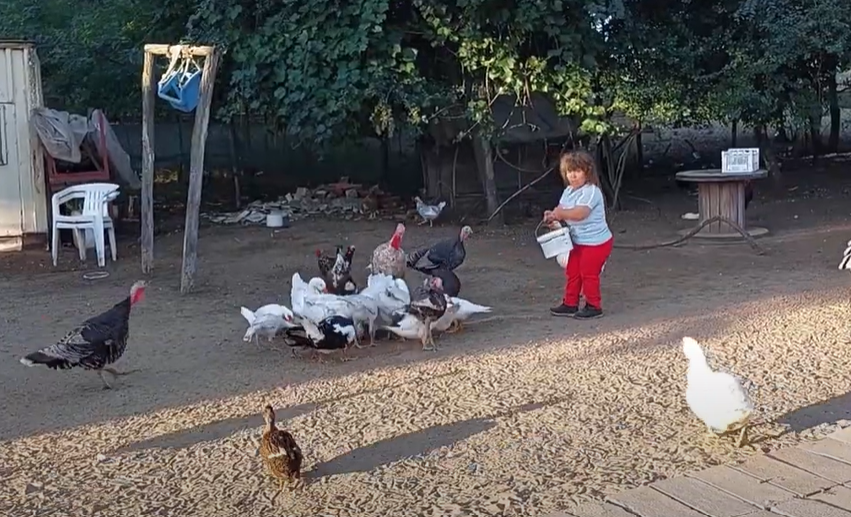For millennia, traditional herders have managed sheep and cattle on the grasslands of Central Europe, perfecting the skill of grazing animals on different pastures. Today we acknowledge that traditional herding is a key example of sustainable livelihood practices that protect and conserve the quality of their land.
In this article, we hear from Ibolya Sáfianné and her husband László Sáfián, who are traditional herders in the Hajdúsámson region of Hungary, as well as Hungarian Ethnoecologist Zsolt Molnár, Scientific Advisor at the MTA Centre for Ecological Research, who has carried out extensive research on traditional herding. Ibolya and László explain how the family lives and works together, why traditional herding is crucial to maintaining biodiversity, what sets traditional herding apart, and what the future holds for traditional herders.
Zsolt –
Traditional herding is special because it is based on intensive observation. A traditional herder spends all day with their animals, thinks about them all night, and sees each of them – of which there are hundreds – as individuals. All their activities are based on this detailed observation work.
The other thing that makes traditional herding different is the special bond they have with their animals.
Traditional herders get their first sheep at the age of two or three. They’ll be demanding a sheep from this young age. And when they get the sheep, they also get the responsibility of feeding it, watering it, and caring for it. And eventually, you will eat the sheep. It is this love-based responsibility that is the essence of traditional herding.
A herder watches over his flock. Credit: Abel Peter.
Authors
- Ibolya Sáfianné, Herder, Hajdúsámson, Hungary
- László Sáfián, Herder, Hajdúsámson, Hungary
- Zsolt Molnár, Ethnoecologist, Centre for Ecological Research, Hungary
Ecosystems
- Grasslands and Shrublands
Topics
- Knowledge, Culture and Spirituality
Type
- Long-form
Date
- This case study forms part of LBO-2, originally released in 2020.
Ibolya –
For us, working together as a family is hugely important, and we all know that the animals come first. Sheep are always at the centre. They’re always on our mind because this is the most important thing for us.

The family at the farm: Ibolya Sáfiánné, László Sáfián, Ibolya Sáfián (daughter), Erika Sáfiánné, Lajos Sáfián, Erika Sáfián (daughter), Lalika Sáfián. Credit Ibolya Sáfiánné
Ibolya –
When my daughter was just a baby, I took her to the shed so she could get used to the sounds of the animals from the very beginning. In the winter, we’d put her next to the animals while we fed them.
Other children get frightened by strange sounds, but she calmed down as soon as she heard the sheep, the horses, and the dogs. When she was a toddler, she learned how to walk among the sheep. A stranger would frighten the animals away, but if a child gets used to it, they know how to move so as not to disturb the animals.
And then we took her with us when we took the animals grazing to the pasture. And she loved it. She gathered flowers or played with the lambs before kindergarten age, before she was three. I always took her with me to the pasture. And now when she has a summer holiday at school, she goes with her father to the pasture or takes a meal to her father in the pasture in the morning.
When she’s home from school, she always comes to the shed and helps with the work; feeding the lambs, looking after them. She has her own lambs, her favourites, and her own dog. It’s obvious that she loves it, that she’s interested, but nobody knows what the future brings.
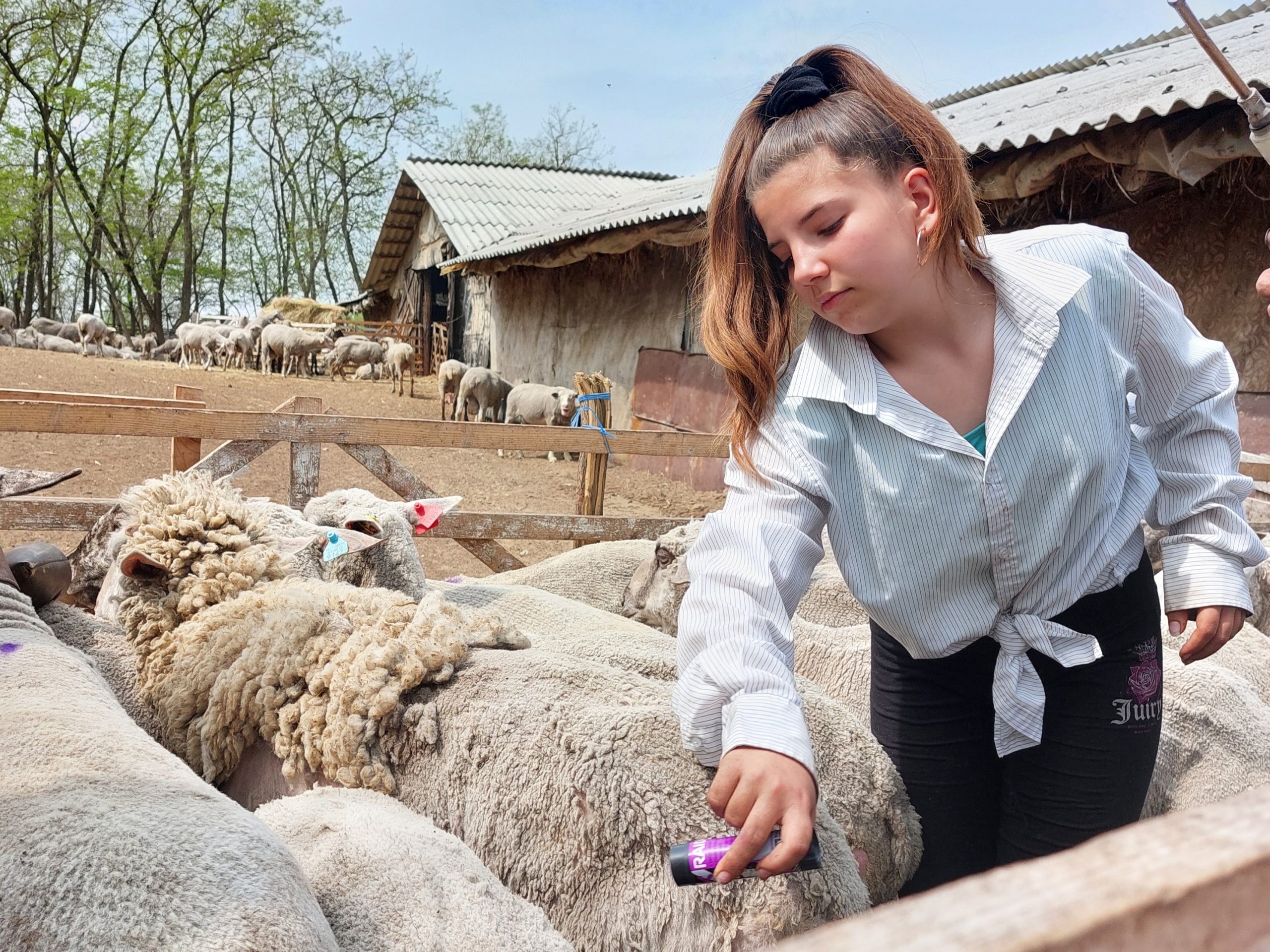
Ibolya’s daughter marking the sheep after they have been treated for parasites. Credit Ibolya Sáfiánné.

Lászlo and Ibolya eating in the pasture. Credit: Ibolya Sáfiánné
Ibolya –
If my daughter didn’t want to become a herder, I wouldn’t force her, because if you don’t want to do it, you won’t be able to do it well. You have to love it. You can only do it if you really want to.
The key thing, the thing that makes us unique is that we do it together as family, actually two families (with the family of my husband’s brother). My husband always says that if we work together, then we also go out together and have fun together.
Family, and the love of sheep, the love of animals. That’s the key thing about us.
The family working together on the farm. Credit : Ibolya Sáfiánné
Can you learn to become a traditional herder?
Ibolya –
That’s a good question and it’s difficult to answer. The first thing to say is that if you want to be the best, then you have to be born into it.
But even if you are not born into a herder family, you can learn it if you’re really committed. You would need a good teacher, someone who is a real herder, who has the experience and can teach you all the nuts and bolts of herding. But it requires really complex knowledge.
Livestock is not like an object. If you leave an object, it will be the same when you return, but animals will always change.
They may get an unexpected illness, and if I’m not there and I don’t detect it in time, then it will die. You have to be familiar with the illnesses, and you need to be around them all day to observe them well.
If you’re born into a herding family, you have the eye for it. You realise it immediately. My husband or I will know straight away if there is a problem with the sheep – you can see it in their eyes, though the signs may often be very slight. But loving your job is the first thing. The most important thing is that you love your animal, because then you will pay attention.
Zsolt –
Other herders argue that you cannot be a traditional herder unless you are born into a traditional herder family. If you’re not with the animals from the age of one, two or three years old, it’s much more difficult to get the type of attachment needed to love the animals in a way that you can produce meat in a love-rich environment.
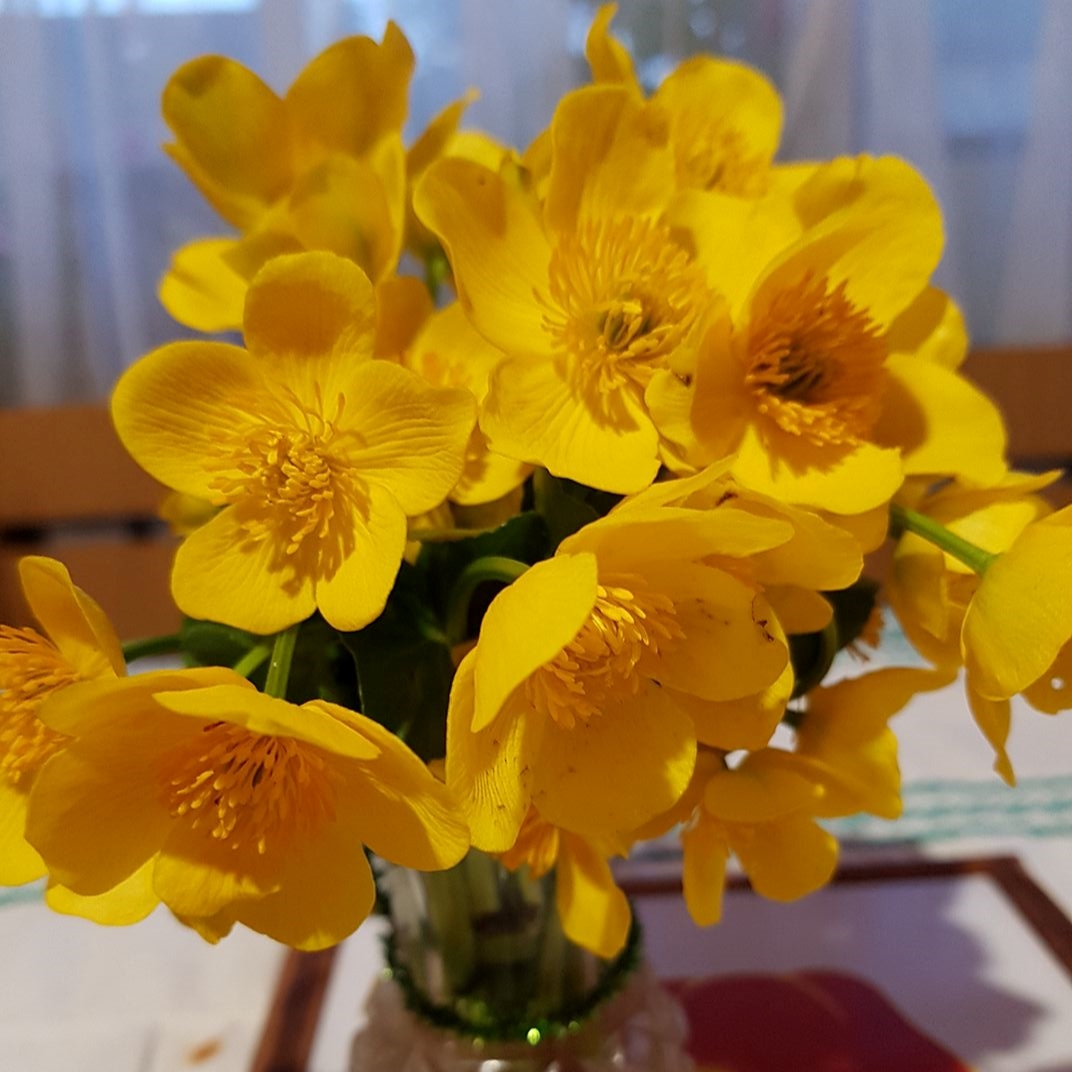
Seasonal flowers that László brings Ibolya from the pasture. Credit: Ibolya Sáfiánné
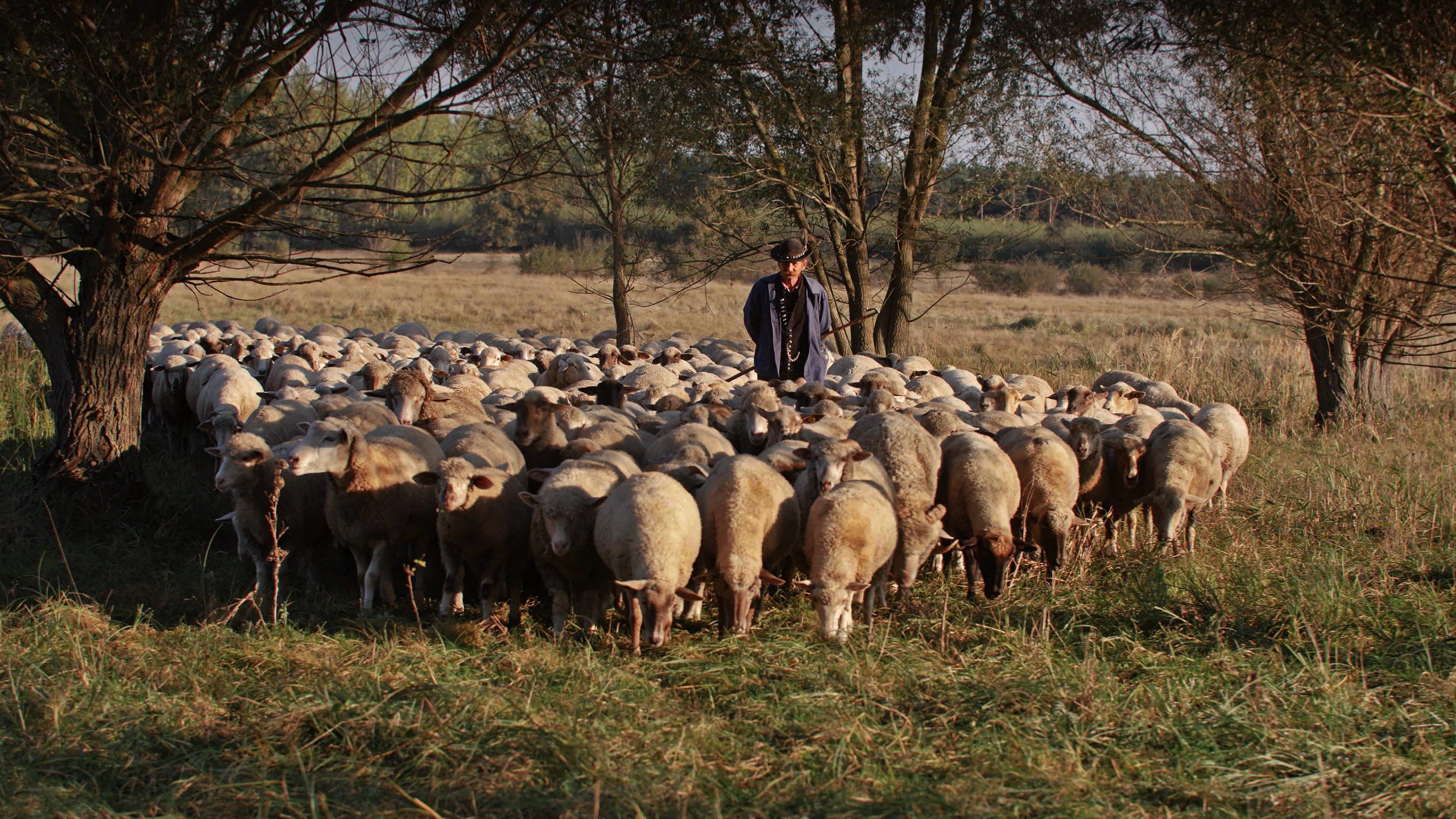
László with his sheep in the pasture. Credit: Sándor Karácsony
How much do Hungarians know about traditional herders?
Zsolt –
Many Hungarians are aware of them. In folktales, Bible stories and festivals, herders are very present.
In every other Hungarian family, mothers and fathers read folktales hundreds of times for their children, folktales that are full of herders. Usually there is a princess, or a woman from a rich family that falls in love with a cattle, sheep or swine herder, and the father forbids the union, saying that the young man is just a herder and not worthy for his daughter.
Then the father creates competitions between the herder and other princes and rich young men to prove that the herder isn’t good enough. But the herders always win, because they are honest, clever and determined.
Folk festivals
Zsolt –
Hungarians also see herders in festivals because there is a movement to revive Hungarian folk traditions. So they’ll see herders on stage at these festivals in their beautiful embroidered clothes, and everyone loves to take selfies with them.
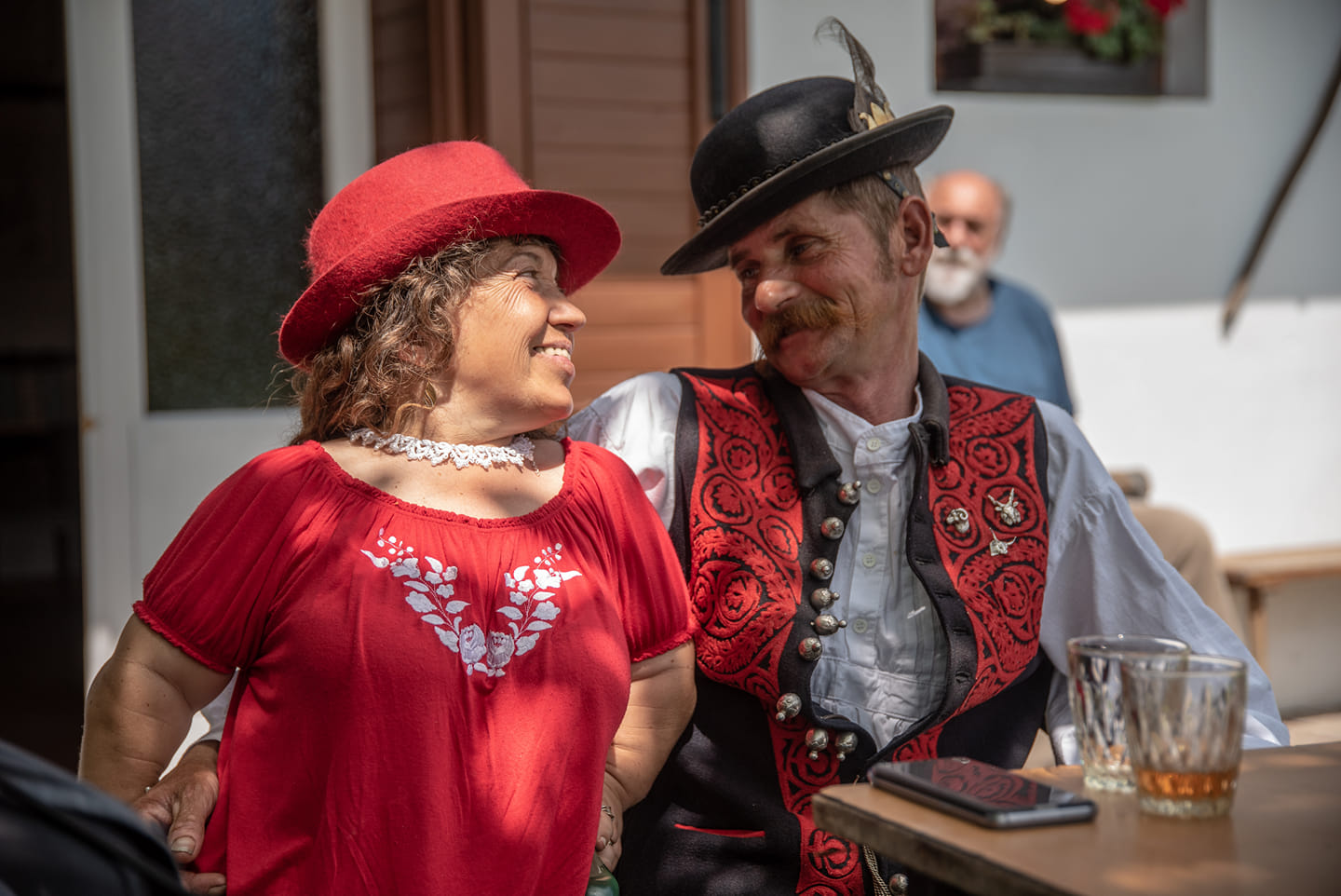
Ibolya and László at a festival. Credit: Boldízsar Jenei
Credit: Ibolya Sáfiánné, György Czéher and Tiborné Both
Ibolya –
At these events, we always wear our festive clothes and, if possible, the whole family will attend. It’s a time for us to meet other herders and enjoy ourselves, and sharing stories late into the night. It’s a chance for us to recharge our batteries.
Zsolt –
However, many Hungarians only really see herders at these festivals. Around 50 to 80 years ago, almost everybody had a direct personal connection with a herder, but now it’s only about 5-10% of the population, or even less.
Understanding what herders do
Zsolt –
Although herders are present in festivals and in stories in Hungary, this doesn’t mean that people have a full understanding of the work that they do; that they produce healthy and tasty meat and manage grasslands.
László –
People don’t always see that we herders also work for nature: we manage the pastures, we manage weeds, bushes and reeds. People think that all this diversity comes from nature only; they believe that these grasslands would survive without grazing.
Proper grazing needs knowledgeable herders. Otherwise, livestock would only eat the good grass. Many areas still have their own herder who knows the area and what can be grazed where and when.
Without herders, these areas would not be pasture any longer, just rough land.
Left to their own devices, sheep and cattle are inclined to overgraze some parts of the pasture.
But if a grassland is not grazed at all, it will be overgrown with weeds. Pastures would be ruined and go wild if there is no livestock on them. Thorny bushes and thistles would spread, and they must be cut back by conservationists with expensive machines at high fuel prices.
Ibolya’s recordings of traditional Hungarian folk songs taken at festivals.
Erdő, erdő, de magos…
Pozse Mári libája…
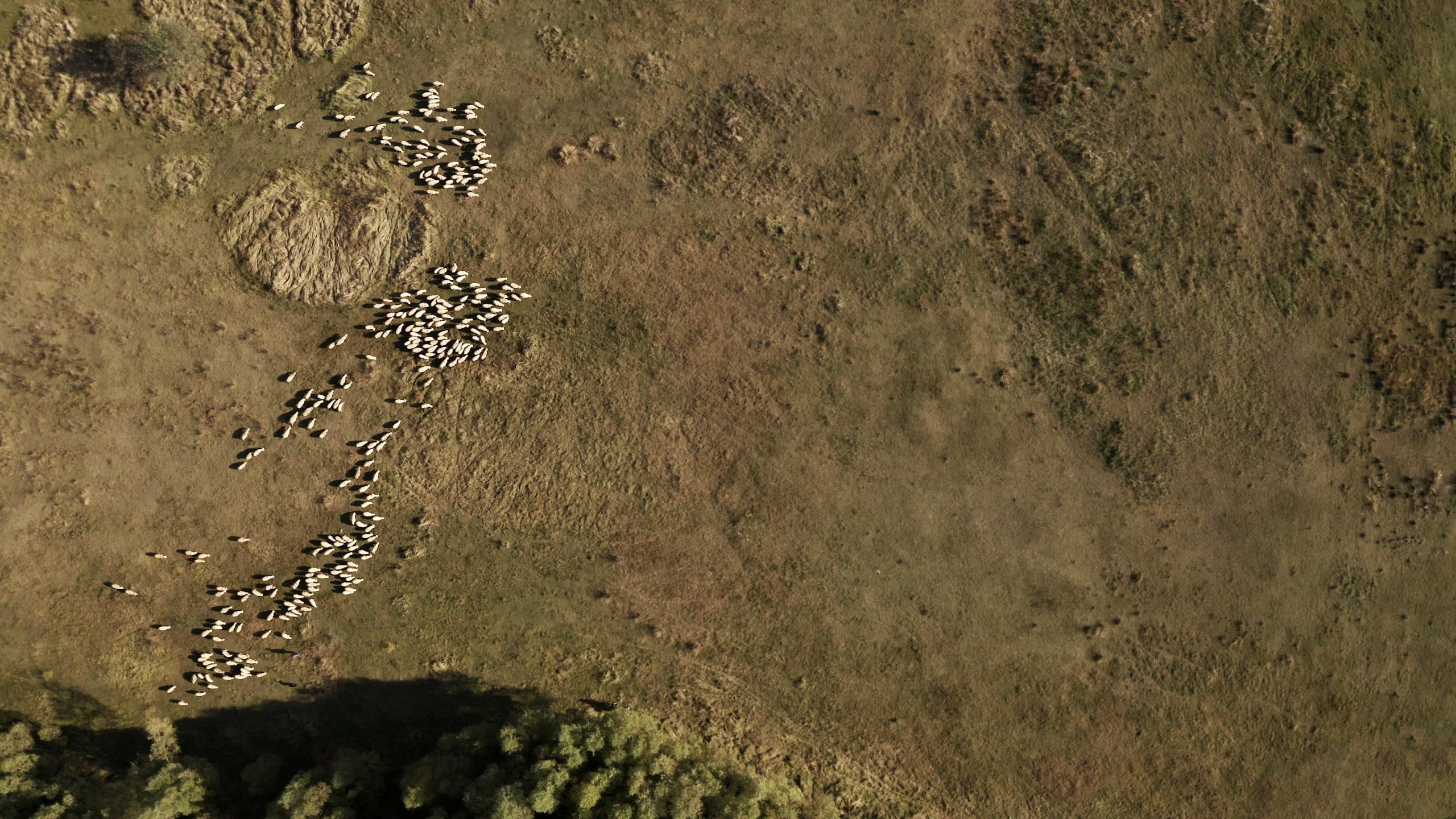
Drone footage still by Sándor Karácsony, taken from the video An Afternoon on the Pasture with the Shepherd Lászlo Sáfián
László –
Herders can also help restore these abandoned pastures. With grazing, pastures become a lot cleaner; they are refreshed. More birds go there. Wildlife has a cycle, which requires livestock.
A lot of people don’t consider herders’ knowledge to be real knowledge.
We did not learn from books—we inherited this knowledge, we were born into it. If people respected us a bit more, that would mean a lot.
People also need the understand that “if herders go, tasty meat will go too”.
Ibolya-
“I think the government should educate young people on what herding really means, to make them understand that it’s difficult,” she says. “Some people say that herders just have to stand around and do nothing all day.”
To help with this, [Zsolt and László] created a film that follows László throughout an afternoon of herding, where he describes the intricacies of the work and the traditional knowledge needed to carry it out. It has been extremely popular in Hungary, and the team also produced an English version to be able to widen the film’s reach.
An Afternoon on the Pasture with the Shepherd László Sáfián. Credit: Zsolt Mólnar and Sándor Karácsony
Zsolt –
The film got hundreds of thousands of views and people who commented often said that they never realised how much knowledge and patience is needed to be a traditional herder.
Ibolya –
More recently, people’s view on herders has become more positive, especially since the film became available. More people are valuing this knowledge and appreciating it. You know, every profession, every job has special knowledge, no matter what it is. Before you judge something, you should take a better look at it.
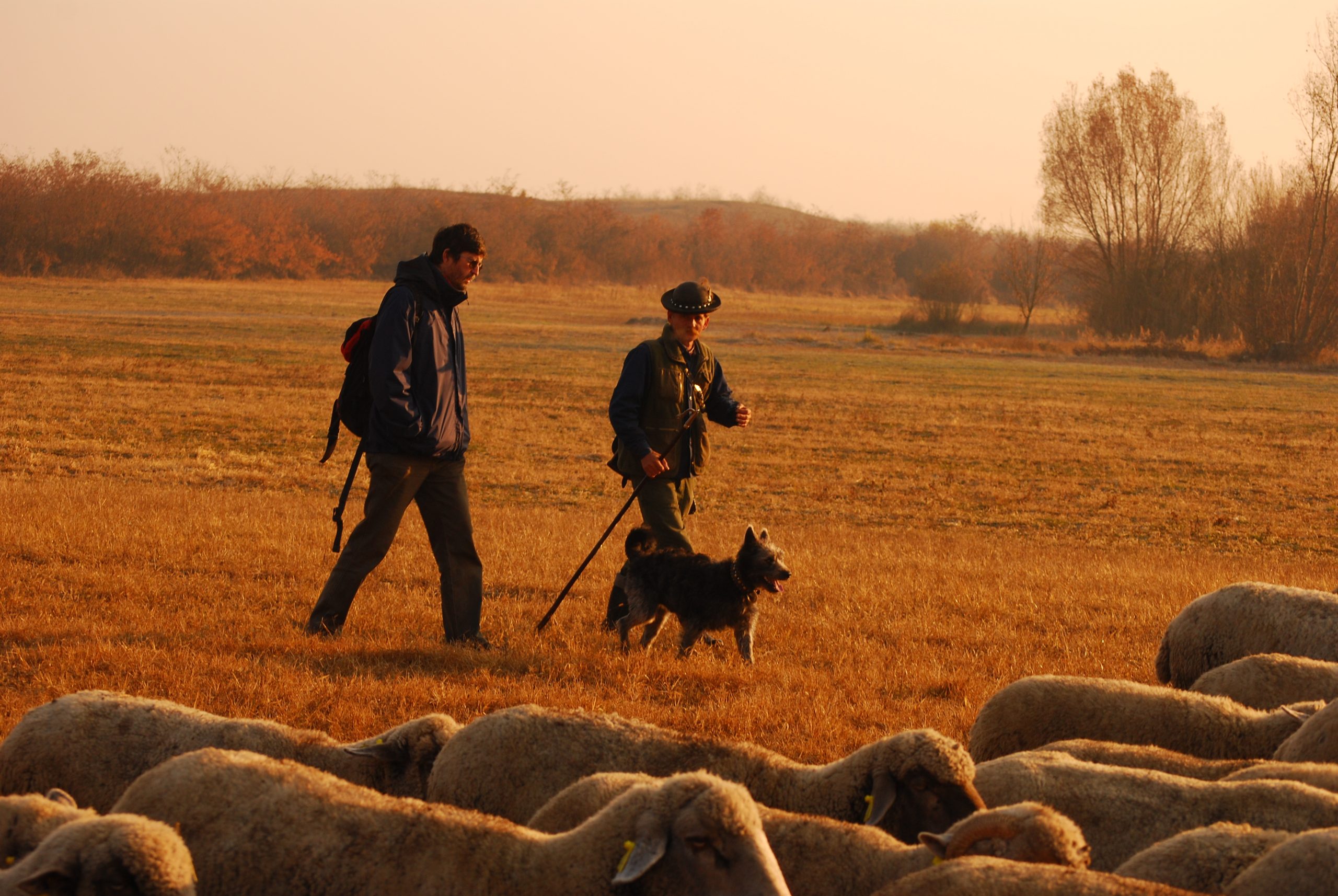
Zsolt walking with László in the pasture, learning about traditional herding techniques. Credit: Ábel Mólnar
Gender divides in the Hungarian herding community
Zsolt –
Traditional herding has always been very gendered. In the past, it was a physically difficult job, so men would take care of the sheep and the cattle, and the women would care for the smaller animals that you can care for at home; the chickens and the pigs. More recently, what often falls to the women is the increased bureaucratic work that is now compulsory.
These days, the traditional gender divides are becoming less stark, as there are machines to do some of the heavy work.
Ibolya –
The typical female roles are tending to the young lambs, giving them food and drink and keeping an eye on them. We check that they’re healthy and keep the herds tidy. The typical male role is taking the animals out for grazing, and he maintains the schedule of who goes where.
It’s true that I also do a lot of paperwork – for the last ten years, there has been so much bureaucracy and red tape. We have to do a lot of things on paper and it takes up more time than we spend with the animals. It’s so frustrating because if there’s a mistake in the paperwork, then we won’t receive a subsidy, or they could even close down our farm.
In the old times, I just went out with the animals. My husband would go in one direction with the larger animals and I would go in another direction with the young lambs and older sheep. I love this about herding, to be out in nature and enjoying the freedom of this lifestyle.
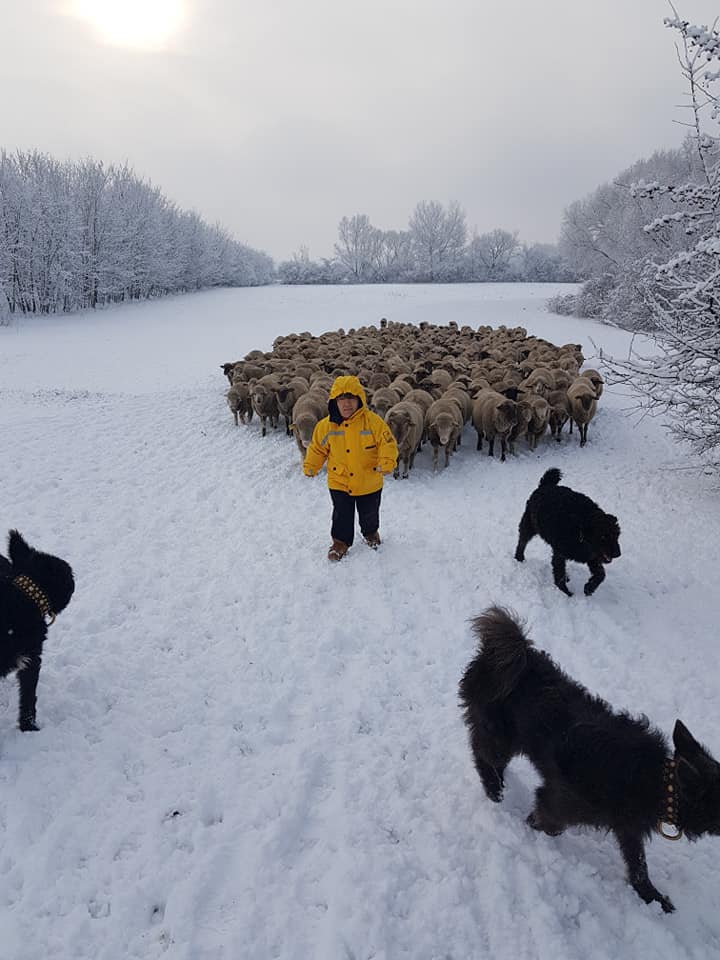
Ibolya Sáfiánné herding in the winter. Credit: Ibolya Sáfián
Ibolya Sáfiánné and daughter Ibolya Sáfián, Erika Sáfiánné and daughter Erika Sáfián herding the sheep. Credit Ibolya Sáfián and Ibolya Sáfiánné
Ibolya –
My daughter and niece do men and women’s jobs too. Erika takes the sheep grazing by herself, she drives the tractor and does the machine work. She enjoys doing the ‘man’s job’. But really, we usually don’t differentiate things as man’s work or woman’s work at our farm.
We do everything together, men and women. Everybody has their own responsibilities, of course, but if it’s needed, everyone can do everything.
Herders working together with conservation rangers
Zsolt –
Historically, conservation rangers and traditional herders have had different ways of working, but over the last few decades, they have started to collaborate more on how to manage the land, especially the species-rich grasslands in nature protected areas.
This collaboration only started recently, because historically nature conservation has always been based on a worldview that comes from the city, from science, wherein the whole mentality of nature conservation is that humans live in the city and nature is outside the city. And people who live in nature destroy it, so we have to control them.
This is partly true, but it’s dangerous to carry out conservation like this without understanding what some people – herders, for example – are doing in nature, with nature, and for nature, and what they are trying to achieve. And that’s why there was a divide between conservation rangers and herders, because they simply couldn’t understand each other’s objectives.
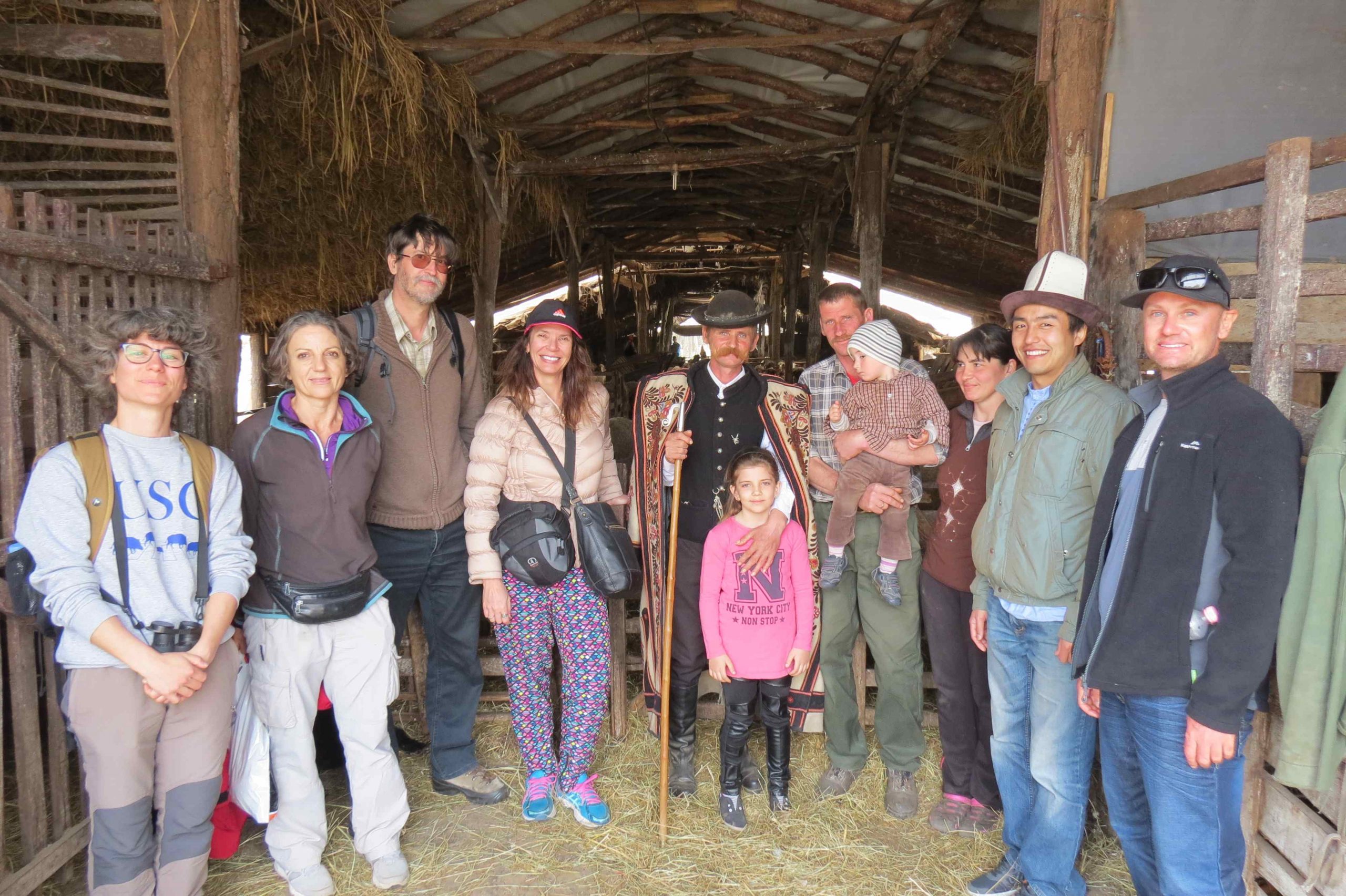
Members of the Intergovernmental Science-Policy Platform on Biodiversity and Ecosystem Services (IPBES) and the Sáfián family
Zsolt –
It was very difficult for them to find the communication channels and build up mutual trust. But it’s important to do so, because the rangers are the knowledge brokers between science-based conservationists and traditional land users like herders.
László –
Things are getting better in our country.
Conservation rangers would not talk to us 20 years ago. They criticised us without asking us anything. Now they stop and we can talk about pasturing and grassland management.
For example, we revived an old meadow management practice: we graze the meadows in early spring, so we can cut the hay later, when the European Union regulations allow it for us. And this is also good for the birds breeding on the ground.
Zsolt –
Herders and rangers have many common objectives, such as preventing over- and under-grazing, stopping the spread of weeds and invasive species. Although around 50-60% of the objectives are the same between rangers and herders, the issue is how those objectives are reached. That’s where conflicts can arise.
They have different worldviews and different knowledge of the pasture. For example, even if they share the objective of properly grazing the land, ‘proper’ grazing means something different to a herder and to a ranger. But as soon as you listen to each other and understand each other, then you can quickly come to a better compromise. And a herder is much more ready to compromise if he feels that he is understood.
László –
We need to recognise each other’s knowledge. We should teach each other. Many conservationists say that our traditional herding is very much needed in protected areas because there were wild horses, wild cattle and bison many millennia ago, and these habitats need grazing to maintain their diversity. Others only see the overgrazed areas managed by less knowledgeable ‘herders’.
Find out more about László and Zsolt’s work to maintain preserve herder knowledge
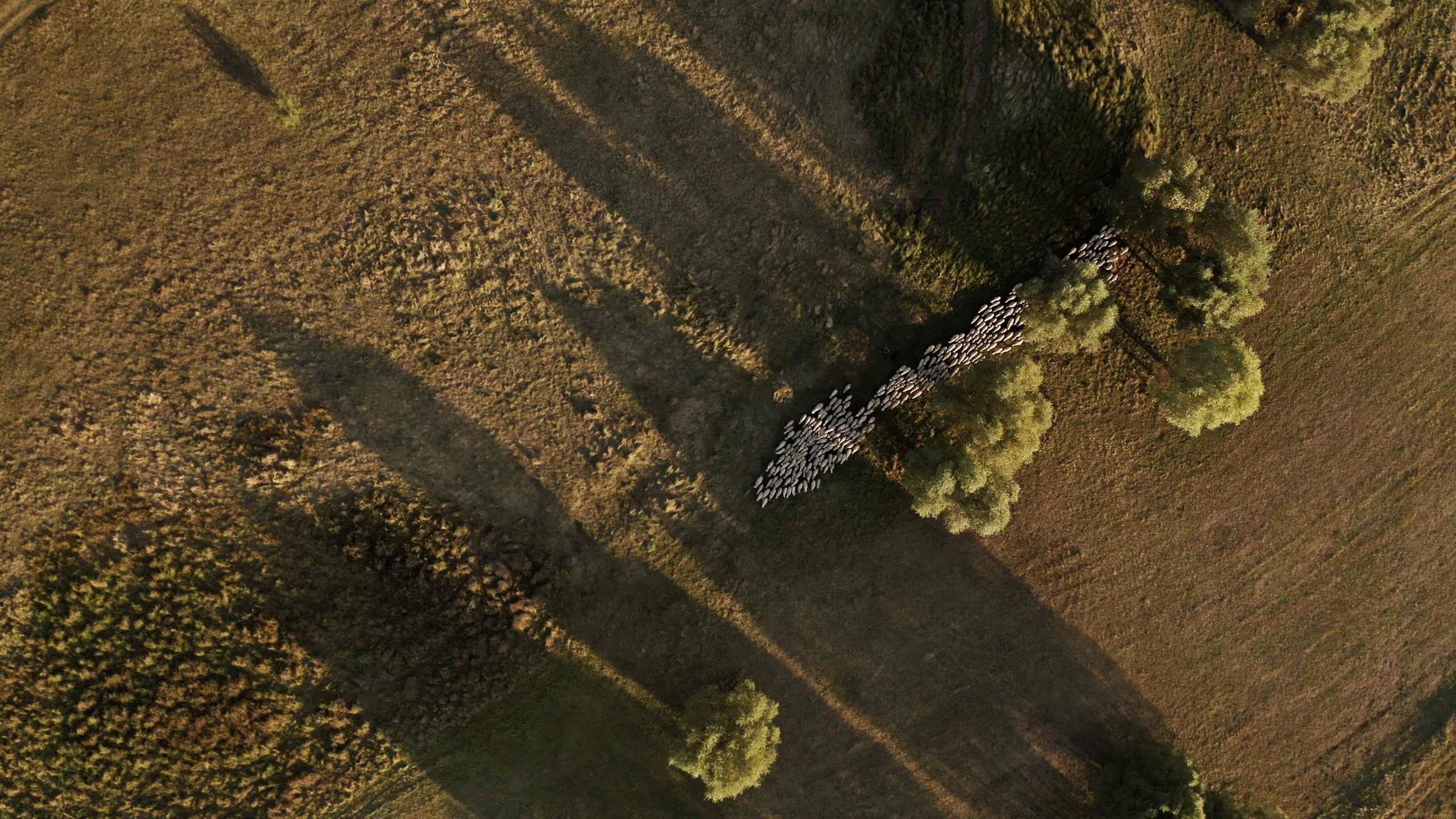
Drone footage from the film An Afternoon in the Pasture with Lászlo Sáfian. Credit : Sándor Karácsony
The future of traditional herding
Zsolt –
Traditional herding is a labour-intensive way to raise animals that relies on traditional knowledge that has been accumulated over generations. However, this is not reflected in the price of the meat when it is sold. As it isn’t sold at a premium price, it can’t compete with other, less ethical, meat producers. Herders need support because they have to compete with industrially-farmed meat, both inside and outside Europe.
In Hungary, there are half-a-million hectares of species-rich natural and semi-natural grasslands in protected areas that can produce human food only if utilized by proper herded grazing. If people understood this connection, herders would have more respect and a better life. If herders were respected and paid fairly, many young people would be happy to return to the traditions, of course with the needed innovations.
Ibolya –
I am worried about the future of herding. People that work with animals need to be paid enough to make ends meet.
Many people have left herding because they are not paid well enough – it’s a very difficult job and it pays very little.
And even if they love the job, they still had to leave because they couldn’t support their family from the money they made.
To help us, I think the government should educate young people on what herding really means. So that they understand that it’s difficult, but if you love it, you could do it well, and produce high quality meat. For example, the government could set up a training school for herders, to help the tradition live on.
